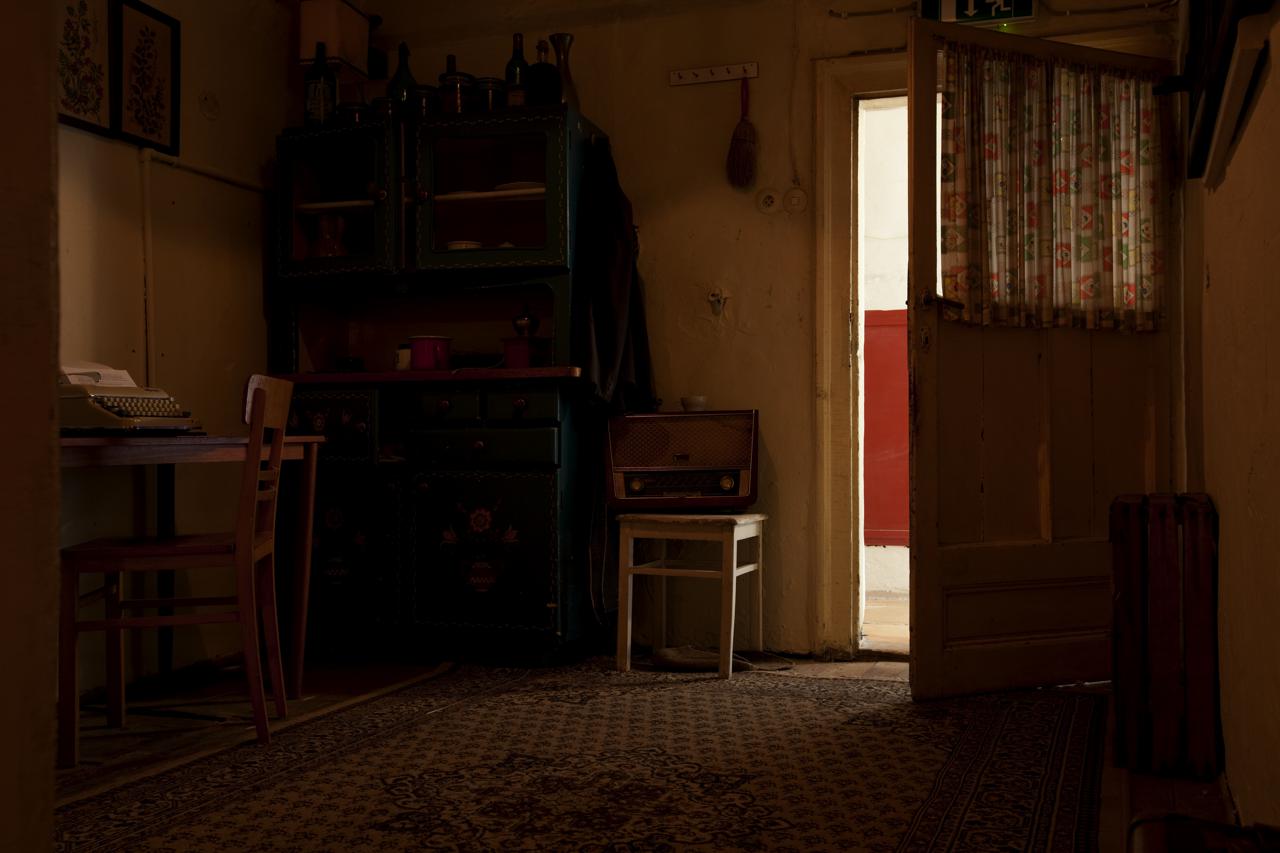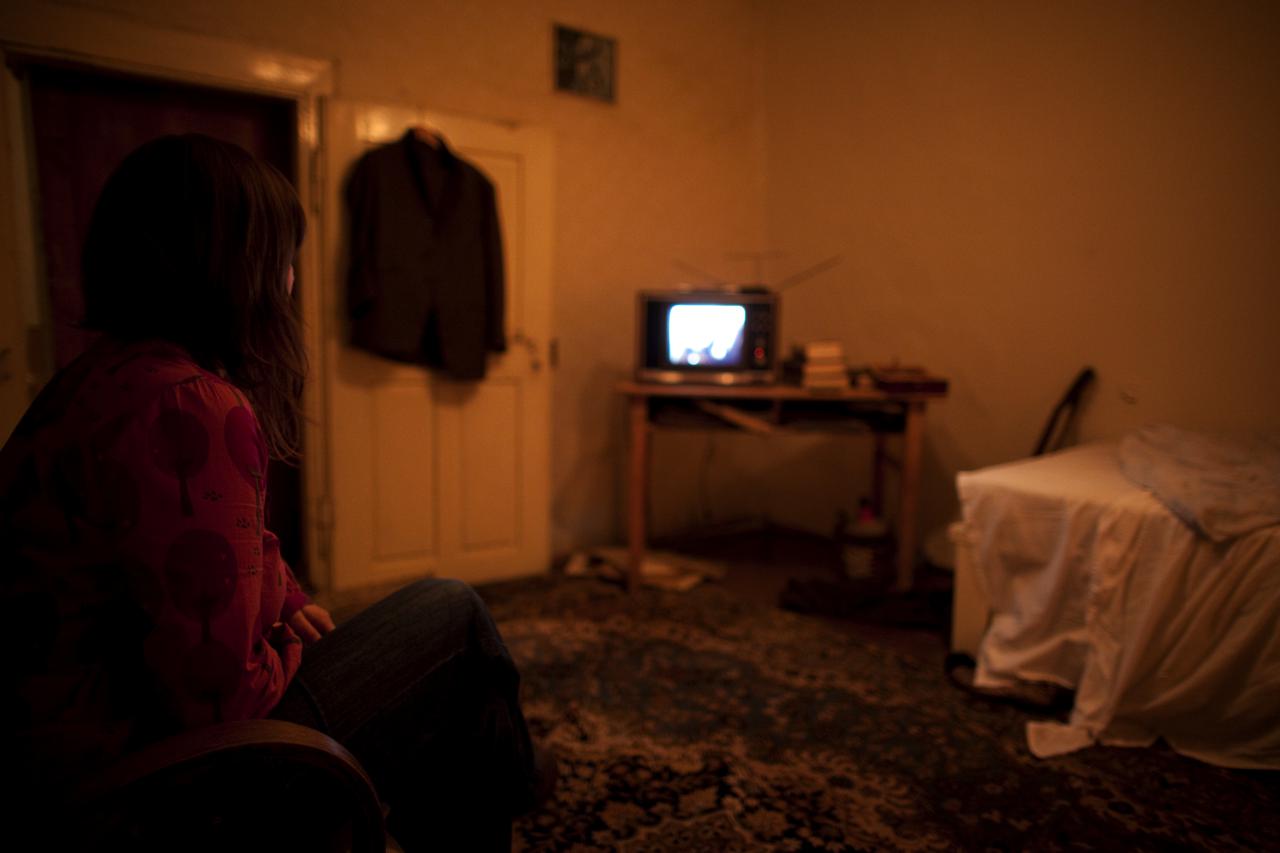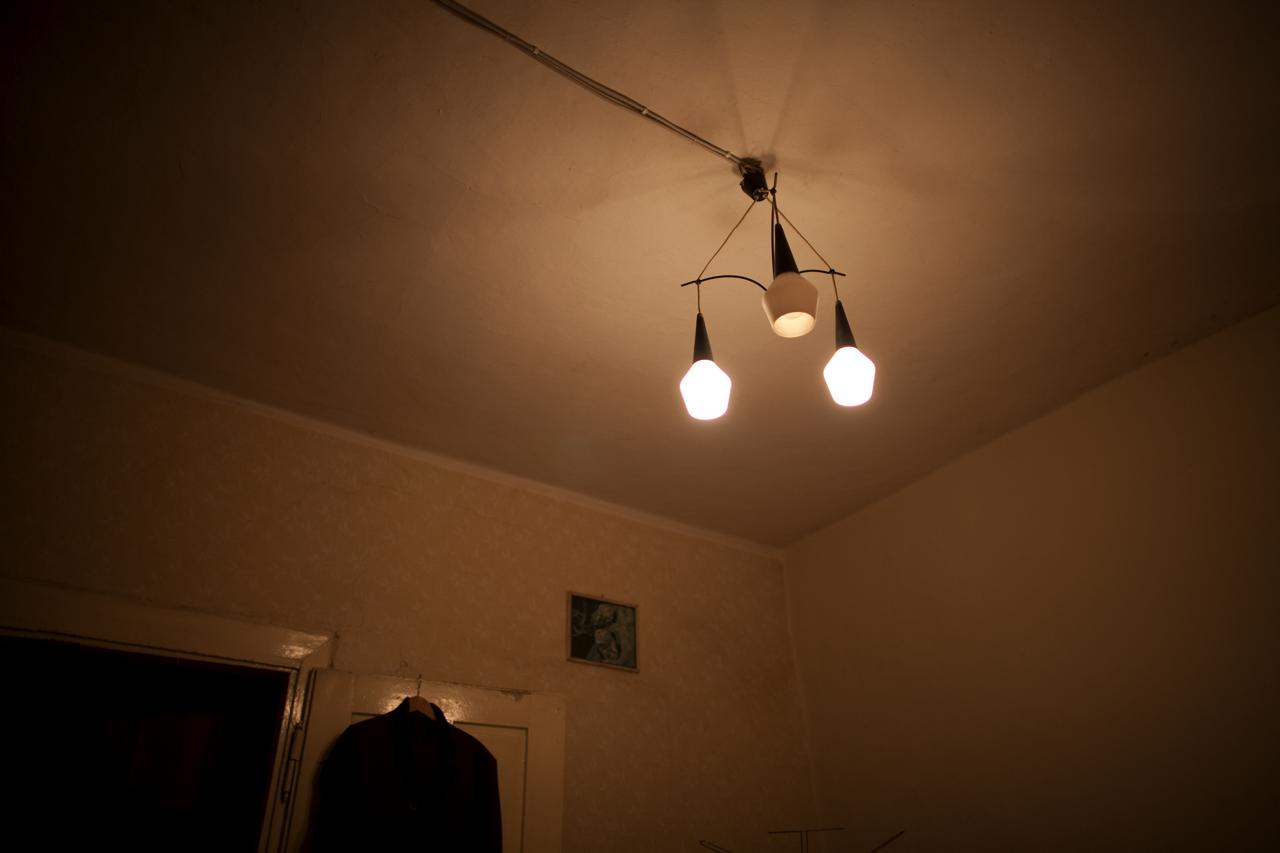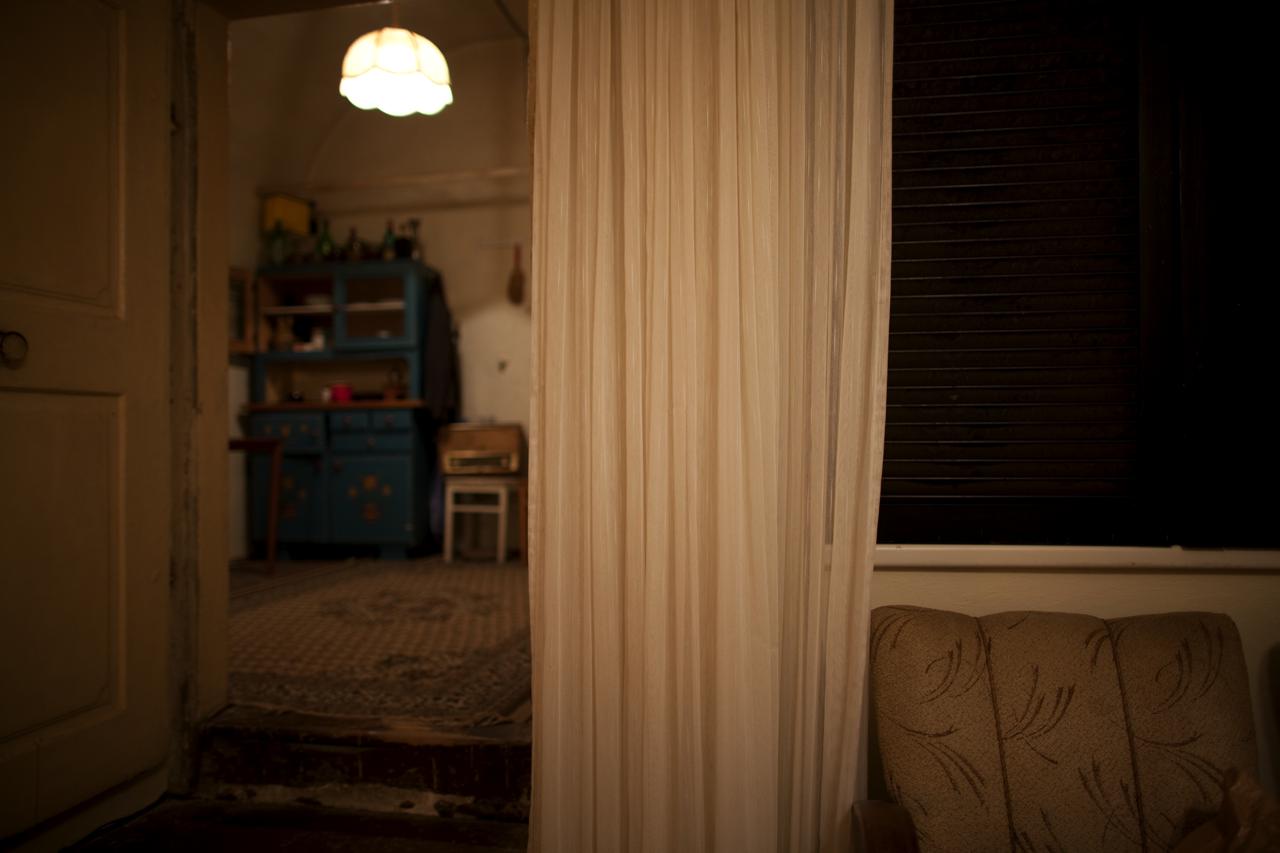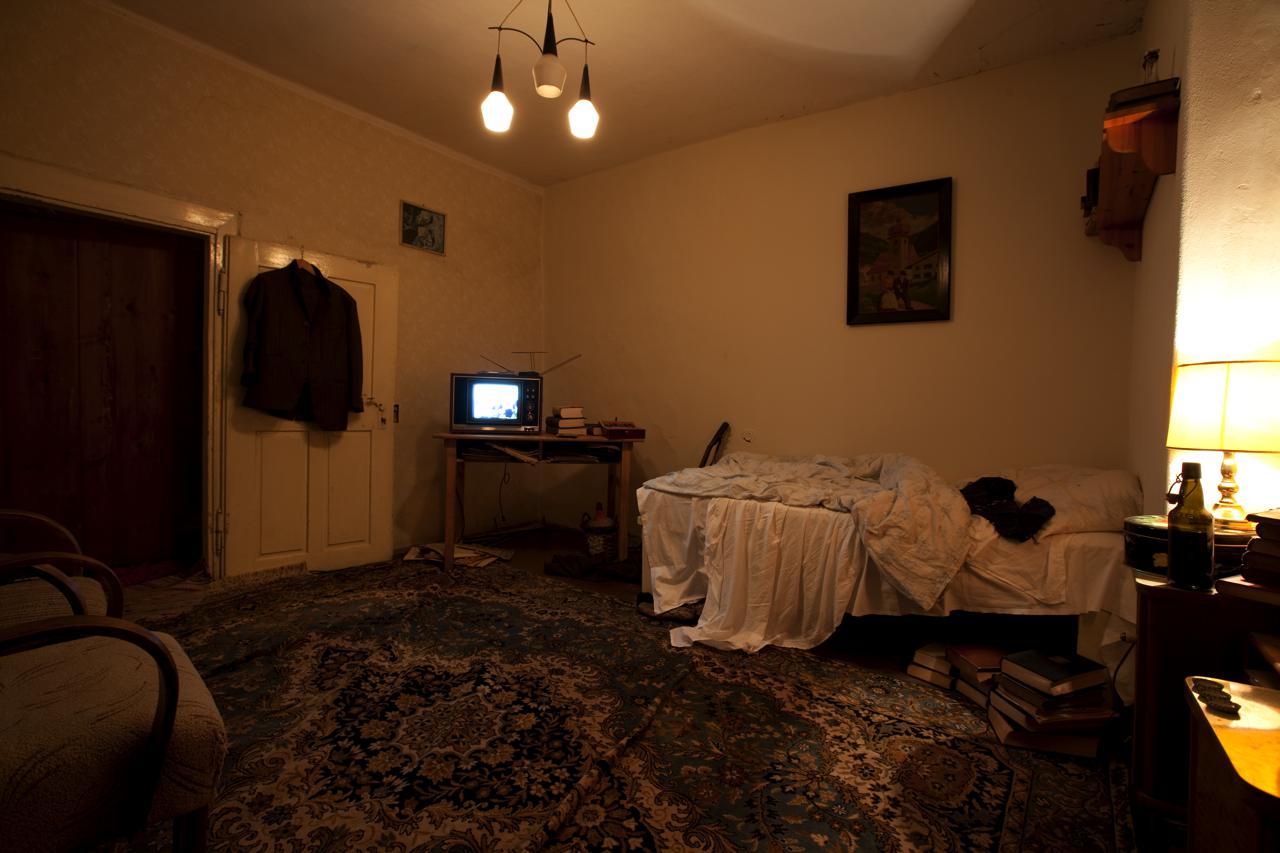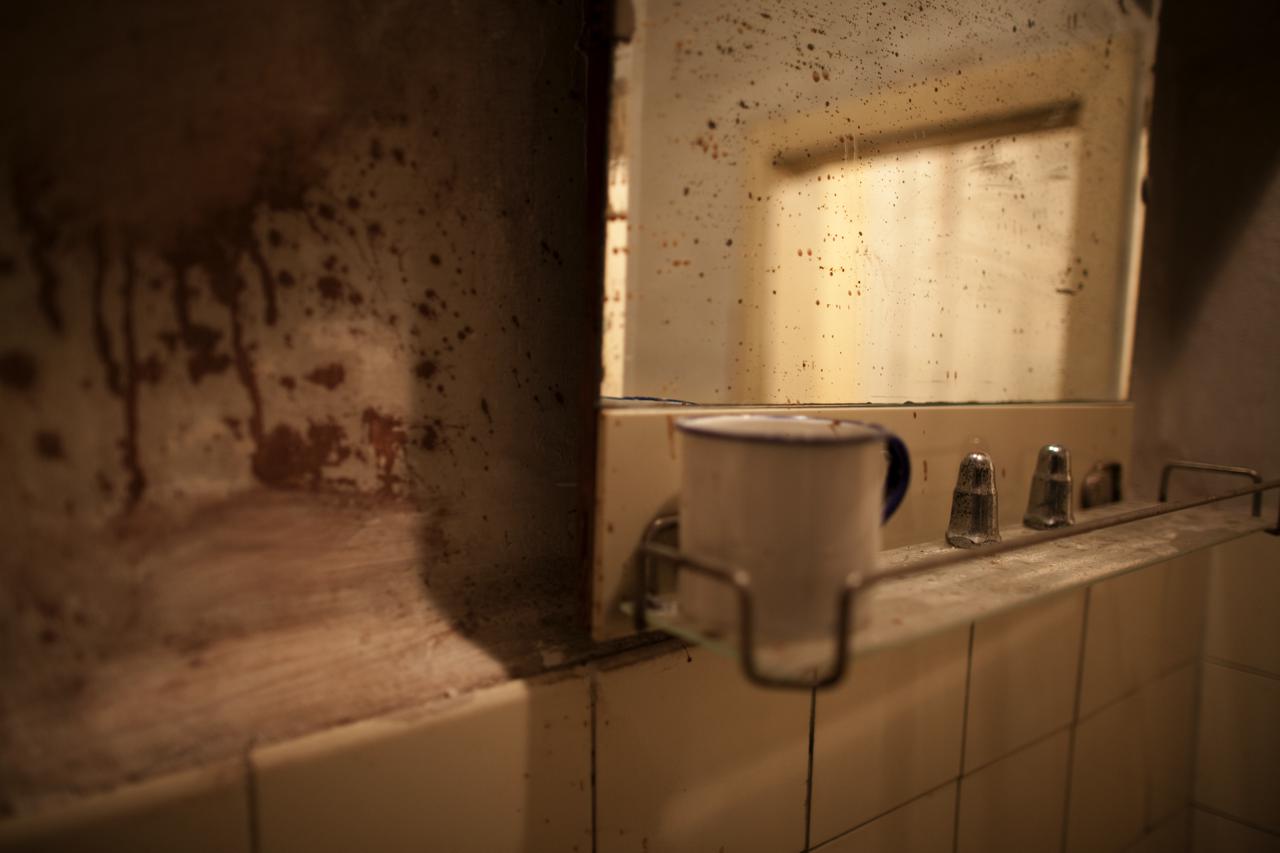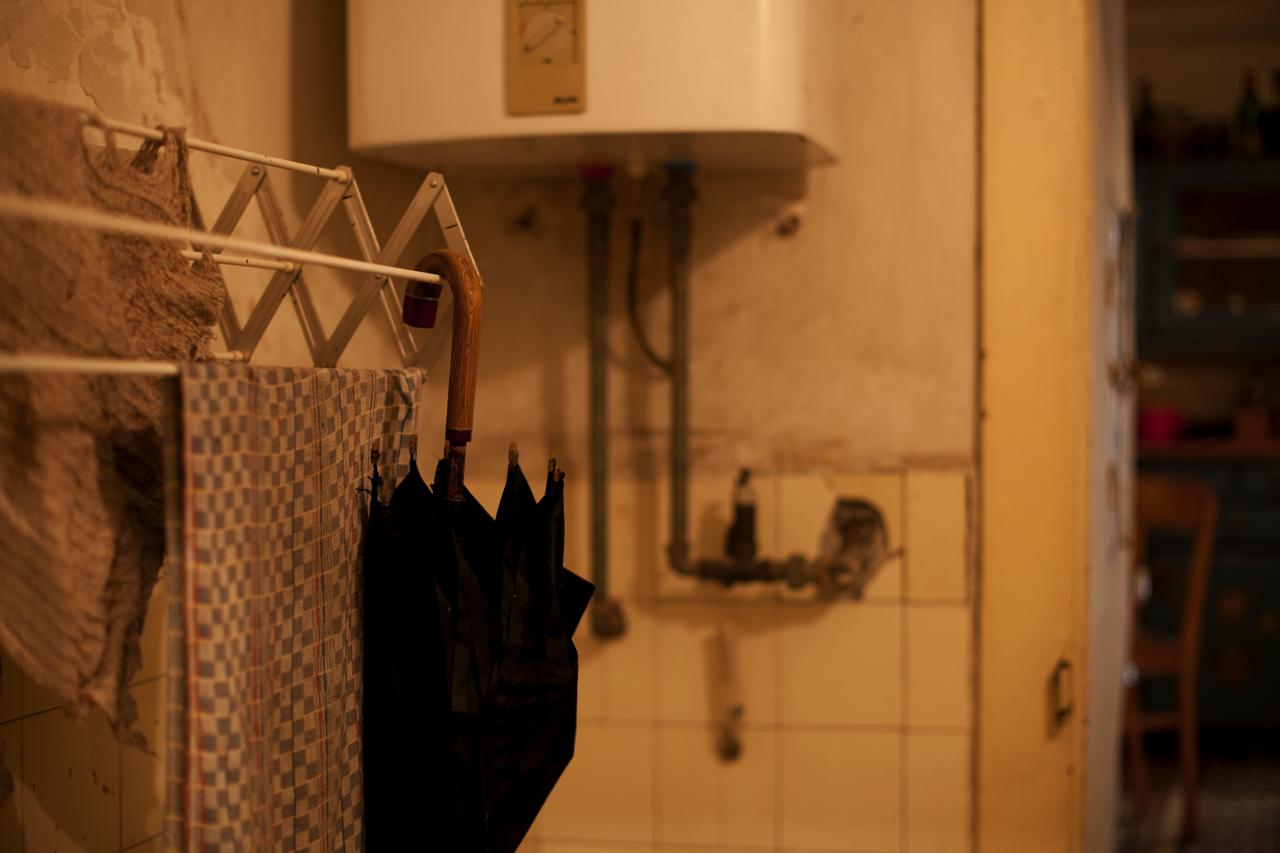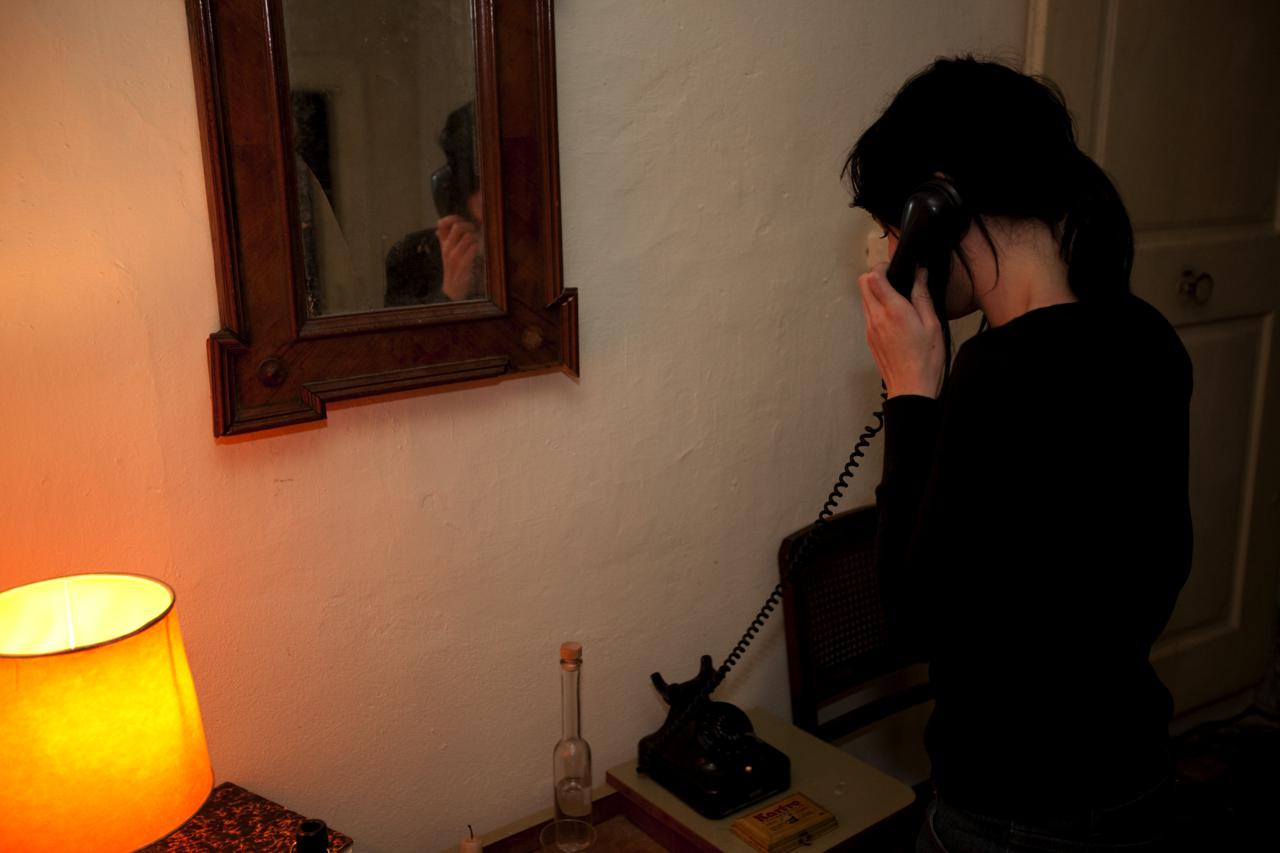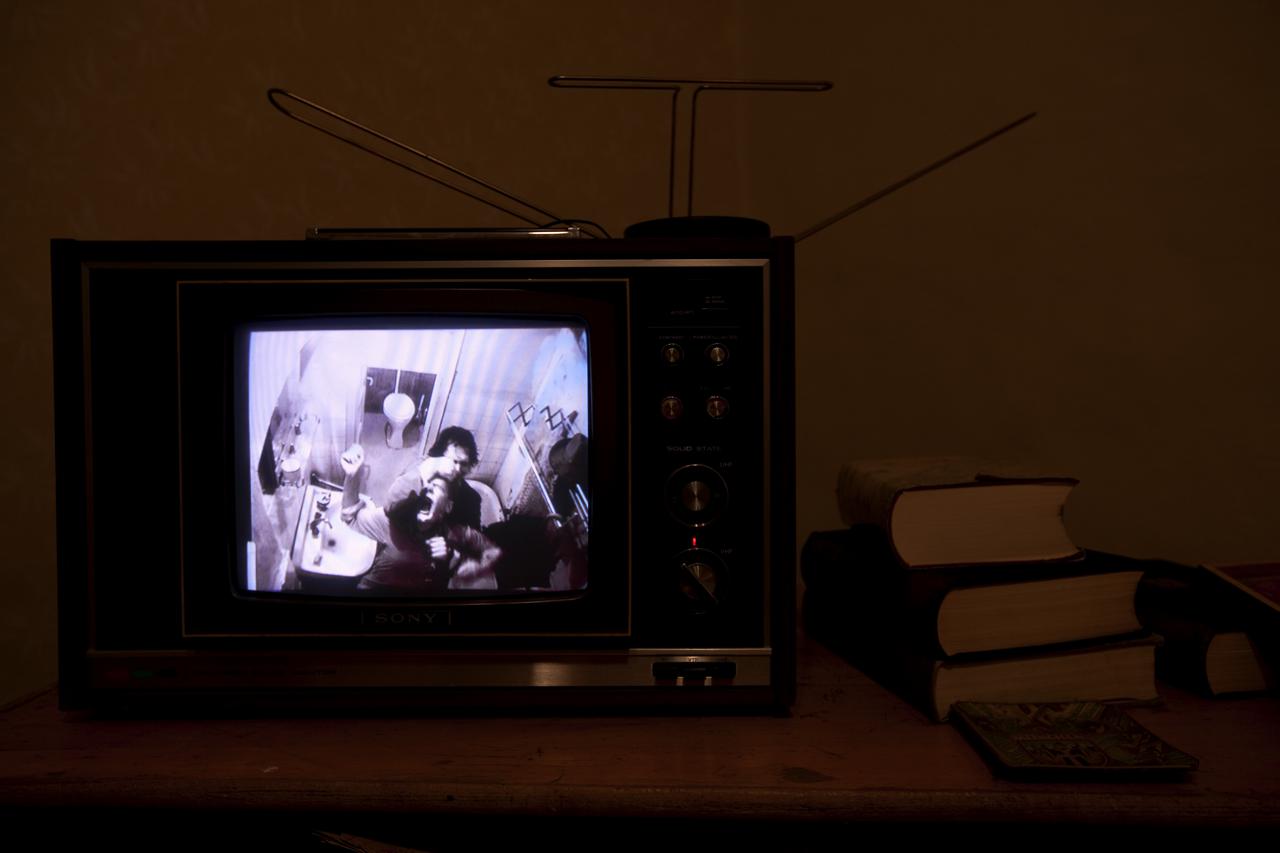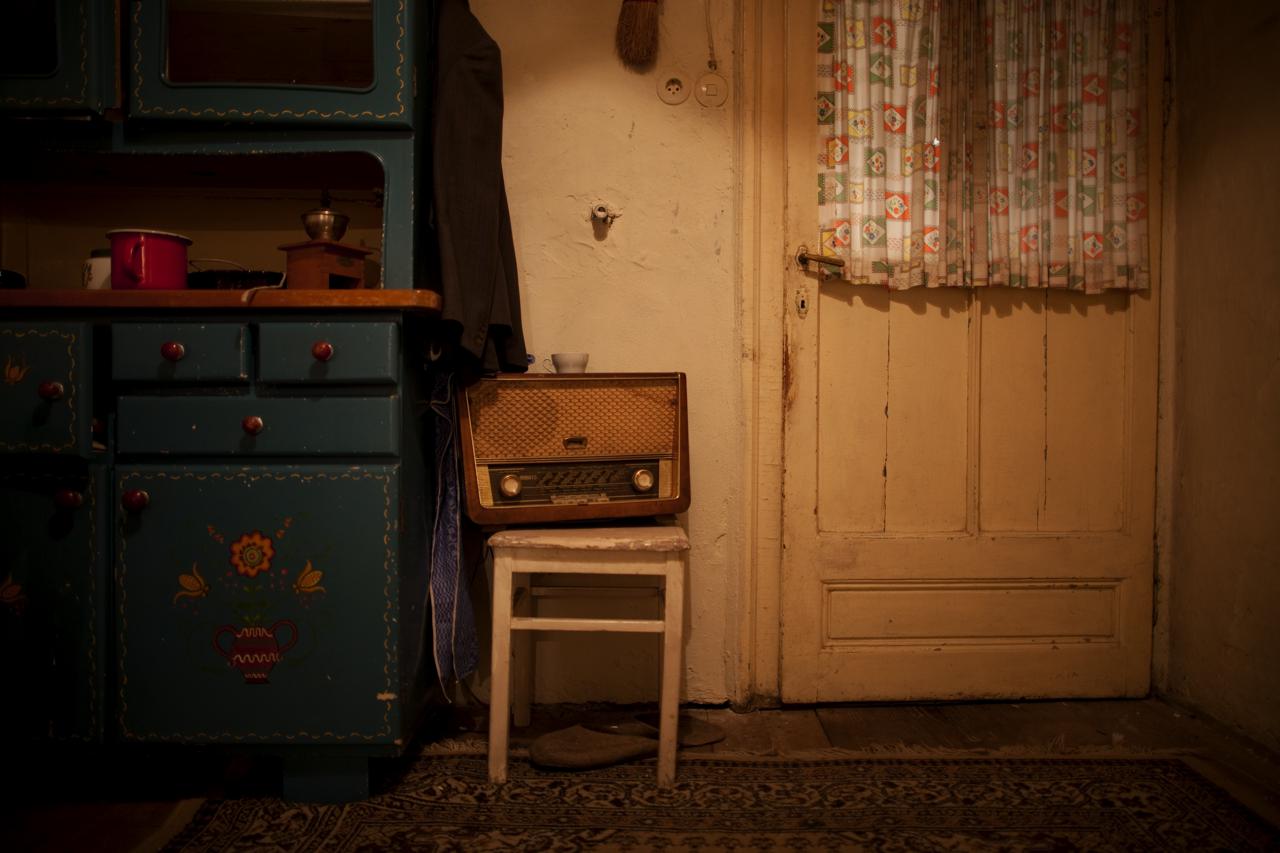Häusliches Glück
You enter the apartment and look around. The rooms appear to still be inhabited. Artefacts from recent human activity are present everywhere: partially prepared food on the kitchen bench top, freshly washed laundry hanging out to dry, an open magazine on the sofa, a television left on in the corner. This place looks lived in. This is an exhibition space, but it feels as if you have walked into someone’s home. Where are the inhabitants? What happened here? You hear noises from a back room. As you draw closer, you notice the door is ajar but partially blocked by a cupboard from the other side. You hear voices. A shadow darts across the wall inside the room. You strain to look into the space, but can only see a fragment of the room. You continue to eavesdrop on the conversation that is taking place, and notice that the old television beside you flickers with a grainy black and white image of the room behind the cupboard. A great commotion suddenly occurs from within the room. You hear a crashing sound and, glancing across at the television, see the action unfold within the room. You realise that what you’re actually viewing on the screen corresponds with the activity you can hear within the room… A phone rings in the lounge room. Although you are compelled to stay and find out what is happening behind the blocked doorway, you momentary pull yourself away to answer the call. A flustered voice anxiously gives you directions down the phone line. The line goes dead…
Häusliches Glück is an installation in which audience members unwittingly find themselves at the centre of a 1959 murder mystery. The work combines techniques of mixed reality, physical narrative and expanded cinema. Pre-composed sound, video media and mechanical devices exist within the recreation of a 1950s style working class apartment in Linz, Austria, to form a series of convincing illusions. Drawn in by the intimate reality of the deserted apartment, visitors transcend the experience of being bystanders, actively becoming part of a complex set of narratives that unfold in the exhibition space.
Exhibitions
- Häusliches Glück’ European Capital of Culture, Linz, Austria, 2009
Credits
- This project was made in collaboration with Time’s Up and commissioned by Linz09, European Capital of Culture
- Thanks to Anatol Bogendorfer, Chistoph Haderer, Julia Kofler and Nina Fuchs and Julia Stoff.
-
Actors: Maria Fliri, Georg Bonn, Luis Wohlmuther, Bronwynn Mertz-Penzinger, Karin Schmidt.
